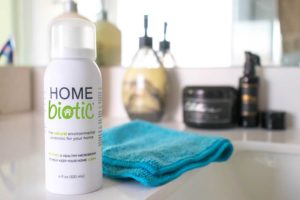7 Ways To Keep Your Home Mold Free

You’re stuck in that cycle. You clean for HOURS then a couple days later those pesky musty odors are back! So we bet you’re wondering: How do I keep my home mold free? How do I keep those stale smells away?
Mold in the home is no joke: it can make you ill, and constantly fighting it can make you feel like you’re living in a dirty home, however hard you scrub. Your home stops feeling like a haven, and starts feeling like a trap.
Mold in the home is no joke: it can make you ill, and constantly fighting it can make you feel like you’re living in a dirty home, however hard you scrub. Your home stops feeling like a haven, and starts feeling like a trap. Share on XBut maybe you need to readjust your relationship with mold. After all, mold is a natural organism that’s been on planet Earth for far longer than humans! Mold is going nowhere. Do you know what isn’t natural? An over-clean, sterile home!
While wiping down with bleach and spraying antibacterial cleaner around may seem to beat back the mold, these cleaners can actually do your environment further harm. And though it seems unbelievable, mold isn’t a problem in itself. Unsafe levels of mold is a problem – for both your health and quality of life. Controlling mold in your home is as easy at this 7 step check-list:
 1. CONTROL MOISTURE & CONDENSATION
1. CONTROL MOISTURE & CONDENSATION
Mold adores a moist, warm atmosphere, and the right conditions are key to how it reproduces, spreads, and forms new colonies. By taking control of the moisture that enters and circulates your home, you can gain the upper hand, and keep your home – and the air you breathe – healthy. That said, if you are living in a property that has previously been flooded, it may be wiser in the long run to move.
Now is the time to consider:
- PROPERLY REPAIRING HOLES IN YOUR ROOF OR GAPS IN YOUR WALLS1 – mold spores can come through the gaps in external walls, while a leaky roof can be all too encouraging for mold.
- FIXING PLUMBING – while dealing with that slow drip under the faucet might not be top of your chore list, not dealing with it is a way to foster mold.
- REMOVE WET CARPET OR OLD CARPET THAT HAS BEEN PREVIOUSLY WATER DAMAGED – it’s very difficult to remove mold from carpets.
- REDUCE MOISTURE AROUND WINDOWSILLS – using moisture eliminating products like absorbers or traps on your windowsill if you have condensation, as otherwise mold may eat at wooden frames, or collect on PVC window seals.
 2. CONTROL HUMIDITY
2. CONTROL HUMIDITY
Mold loves humidity, and in your home it’s not enough to simply remove the sources of moisture. When you breathe out, you’re exhaling moisture, and many aspects of daily life, like cooking, and using a clothes dryer, produce more humidity.
The most straightforward thing you can do is invest in one or more dehumidifiers to help control the humidity inside your home, making it far more difficult for mold to multiply. Keeping the humidity in your house at 50% is best – it’s the sweet spot where mold growth is inhibited but not so low that it encourages the growth of harmful bacteria. Also, use an exhaust fan or open a window while you cook.
Do not install a Energy Recovery Ventilator (ERV) purely for dealing with humidity – it’s a common misconception that ERVs work as a dehumidifier – they do not. Instead, they allow the exchange of heat or coolness between the air indoors and the air coming in from the outside, which can be helpful depending on the climate in which you live, but a ERV is no alternative to a dehumidifier.
 3. CLEAN YOUR AIR CONDITIONING UNIT
3. CLEAN YOUR AIR CONDITIONING UNIT
You rely on your air conditioning unit to cool your home, and often heat it as well, and it’s easy to take it for granted. When tackling mold, it’s crucial to thoroughly clean and maintain your air con on a regular basis. Unfortunately, mold colonies can live in air conditioning ducts, meaning that the spores and toxins they emit can spread throughout your home.
The Environmental Protection Agency (EPA) recommend hiring a professional to clean your air conditioner if you suspect a mold infestation2. Above all, DO NOT run your air conditioner if you suspect it contains mold – it spreads the problem to other places in your home, and potentially re-contaminate areas of your home you may have already cleaned.
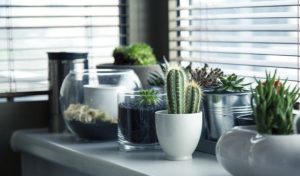 4. INSPECT INDOOR PLANTS
4. INSPECT INDOOR PLANTS
Houseplants can harbor mold, as the moisture and warmth of the soil is very beneficial to growing mold. Although houseplants are often an easy way to improve air quality in your home, if their pots of soil have mold, the health drawbacks can often outweigh the positives.
If you have this issue, consider keeping plants outside or in a dedicated greenhouse and avoid keeping the plants indoors where possible.
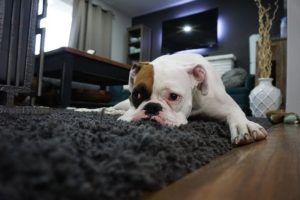 5. TACKLE YOUR CARPETS
5. TACKLE YOUR CARPETS
As stated above, if they have been affected by flooding, you must throw the carpet away, as no amount of cleaning can eradicate the particular water-based molds that can attach to the fibers3.
But if you have carpet in your home that you suspect has been compromised by mold, it’s crucial to clean your carpet more thoroughly, removing any mold spores. With a true HEPA vacuum cleaner, you’re able to eradicate mold spores with the powerful motor and high quality filter.
Remember:
- To empty your HEPA vacuum cleaner outside, to avoid spreading a cloud of spores back into the air.
- It takes time to remove all mold spores from your carpet – it’s not an overnight solution to your problem, and the vacuuming needs to be done in combination with the other items on this list before you see or feel any improvement.
- To try to vacuum from several different angles in order to suck up as many mold spores as you can.
- Professional steam cleaning can help keep a carpet free of irritants including mold
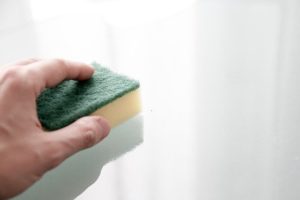 6. USE BORAX ON FABRIC, SURFACES AND WALLS
6. USE BORAX ON FABRIC, SURFACES AND WALLS
Borax is the best substance to use on fabric because it’s a lot gentler than bleach, but it’s also amazing on porous surfaces such as wooden furniture, worktop and table surfaces, and walls4.
Though bleach can work wonders on sinks and floors, it’s simply not suitable for combating mold. Bleach can not:
- Kill mold on porous surfaces such as wood or drywall
- Remove mold toxins and spores
- Sanitize organic surfaces that mold prefers to feed on5
Unfortunately, bleach also removes the friendly bacteria that normally consume mold, potentially making your mold issue worse!
By choosing borax (sodium borate), you’re using a natural mineral to change the natural pH of the surface or fabric. The alkaline of borax disrupts the environment for the mold, making it unwelcoming. Use a combination of disposable wipes, microfiber cloths and diluted borax to clean porous surfaces. Soak fabric for half an hour in a mix of one cup of borax to one gallon of water before putting in the washer to clean. Always wash your hands after using borax.
7. USE HOMEBIOTIC TO BALANCE YOUR HOME
Mold is a symptom of an unbalanced home biome. Once any visible mold has been appropriately remediated you need to make sure you make appropriate efforts to rebalance your home, keeping away musty odors & grime. Homebiotic Probiotic Spray rebalances your home biome using non-toxic, chemical free probiotics. Our proprietary formula used soil-based probiotics that are safe for your family, including the furry ones!


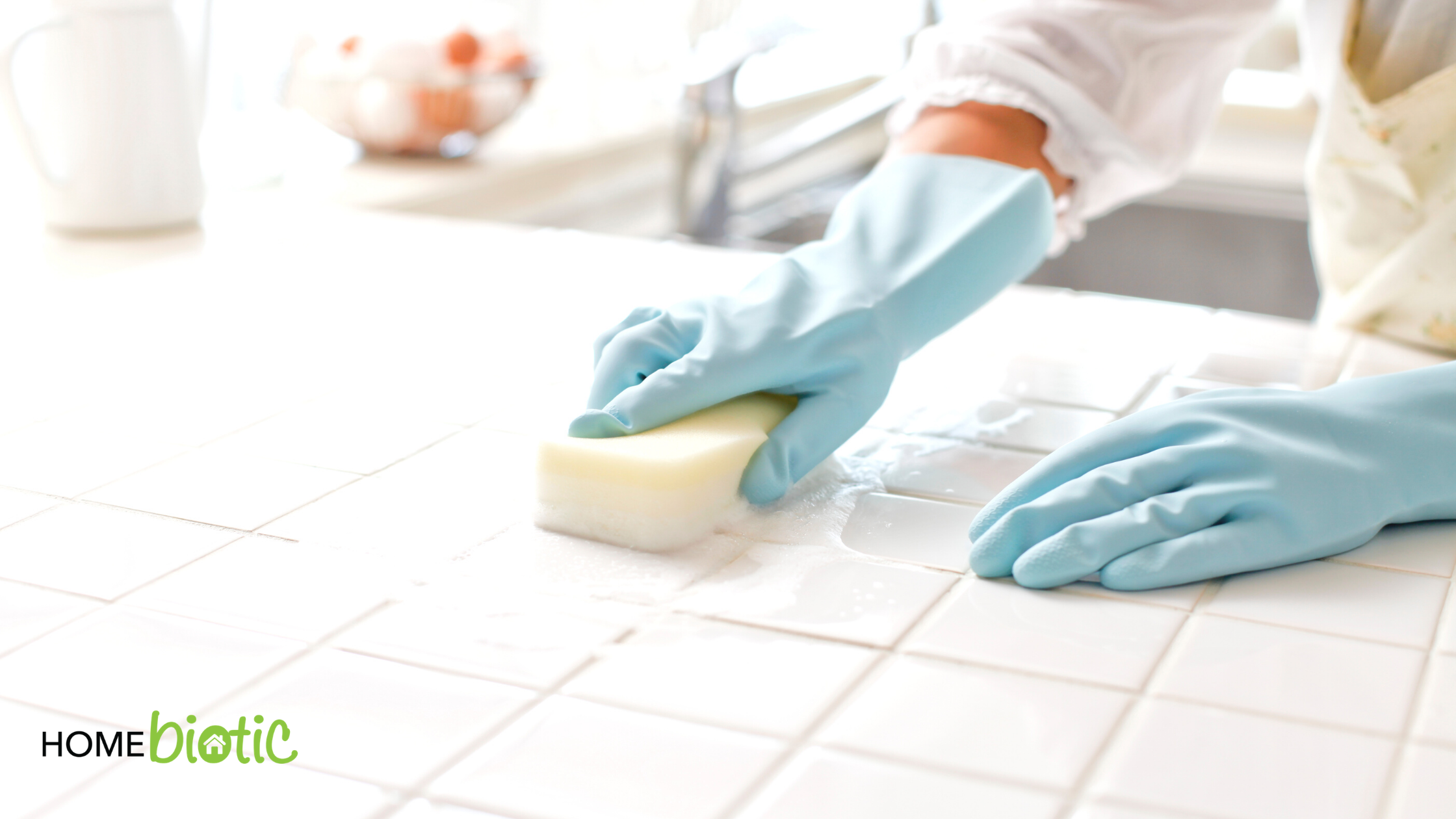

 The study compared fungal diversity between urban and rural settings in the Amazonia region of Peru and Brazil. Fungal diversity refers to the number of different species of fungus found in a specific area. The urban settings studied were apartments and homes in city environments, whereas the rural settings were in remote villages where people lived amongst nature. The study also looked at the fungal diversity for both the feet and guts of inhabitants in both locations.
The study compared fungal diversity between urban and rural settings in the Amazonia region of Peru and Brazil. Fungal diversity refers to the number of different species of fungus found in a specific area. The urban settings studied were apartments and homes in city environments, whereas the rural settings were in remote villages where people lived amongst nature. The study also looked at the fungal diversity for both the feet and guts of inhabitants in both locations. The researchers noted several reasons why fungus grows more abundant in urban environments, to begin with. Our homes are more closed off, which increases internal temperature and limits natural light and air. These are all issues known to worsen fungal growth. Also, urban homes contain more CO2 and more surfaces that aid the growth of fungal microbes 1,2.
The researchers noted several reasons why fungus grows more abundant in urban environments, to begin with. Our homes are more closed off, which increases internal temperature and limits natural light and air. These are all issues known to worsen fungal growth. Also, urban homes contain more CO2 and more surfaces that aid the growth of fungal microbes 1,2. Indeed, the study results obtained by Dr. McCall shows that once we kill off all the bacteria, it provides more opportunities for fungal microbes to grow. And since urban homes already have optimal conditions, this helps explain why fungal organisms are found in greater diversity there 1,2.
Indeed, the study results obtained by Dr. McCall shows that once we kill off all the bacteria, it provides more opportunities for fungal microbes to grow. And since urban homes already have optimal conditions, this helps explain why fungal organisms are found in greater diversity there 1,2.

 Negative Impact: Air Quality
Negative Impact: Air Quality Negative Impact: Water Quality
Negative Impact: Water Quality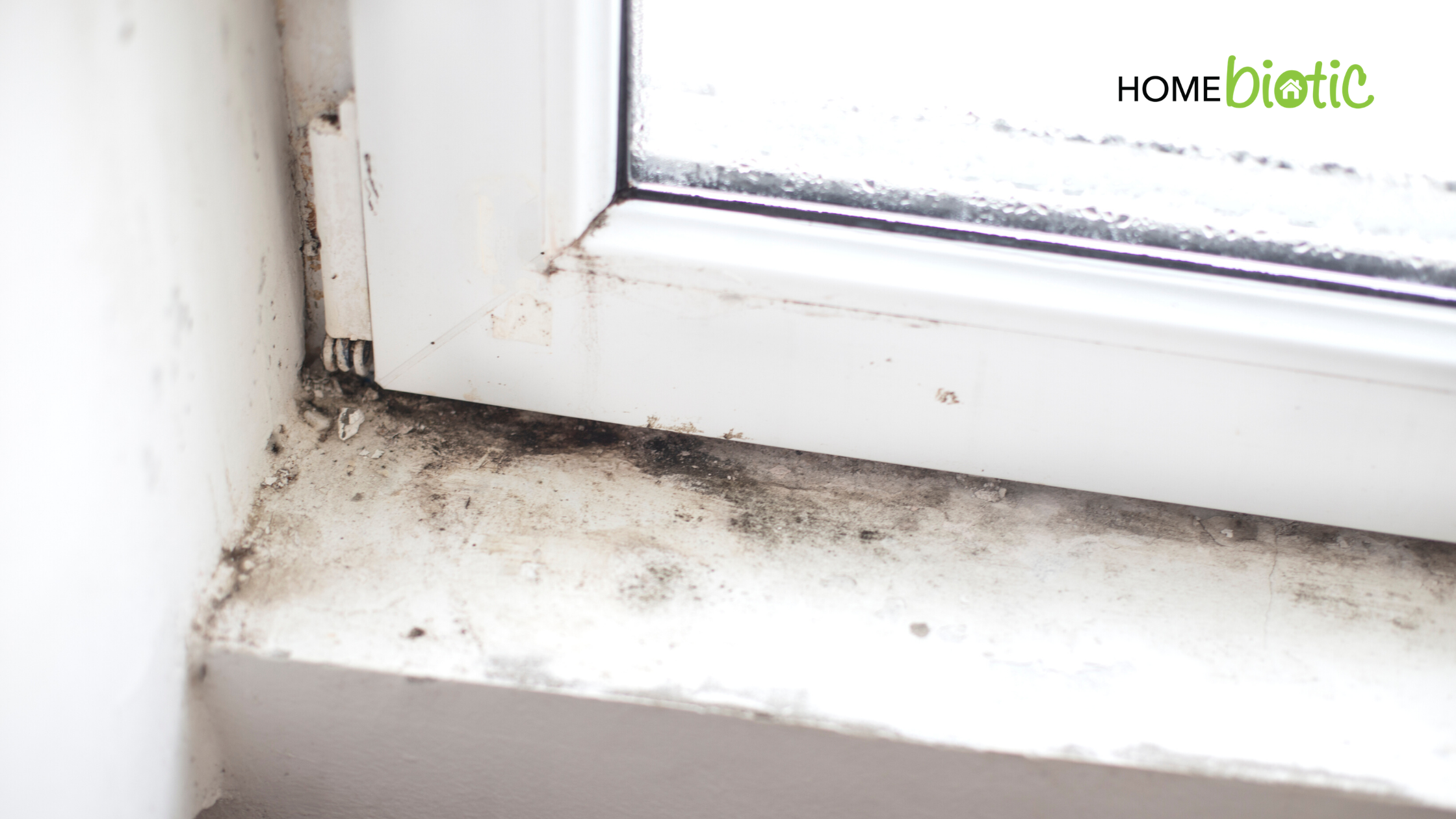
 The Effects Of Mold On The Immune System
The Effects Of Mold On The Immune System Does Mold Make Us More Susceptible To Viruses?
Does Mold Make Us More Susceptible To Viruses?


 HOW DOES THE “FARM EFFECT” WORK?
HOW DOES THE “FARM EFFECT” WORK? WHY DO I WANT TO REPLICATE THE “FARM EFFECT” IN MY HOME?
WHY DO I WANT TO REPLICATE THE “FARM EFFECT” IN MY HOME?
 Next, we need to bring in more soil-based microbes, and there are a few ways that are not only fun but easy.
Next, we need to bring in more soil-based microbes, and there are a few ways that are not only fun but easy.
 Think about it like landscaping your yard. If you just let whatever is already there grow without seeding it with “good” seeds, it will always have opportunistic weeds that get bigger and stronger, but no grass. You can mow the weeds down over and over, but that won’t create grass.
Think about it like landscaping your yard. If you just let whatever is already there grow without seeding it with “good” seeds, it will always have opportunistic weeds that get bigger and stronger, but no grass. You can mow the weeds down over and over, but that won’t create grass.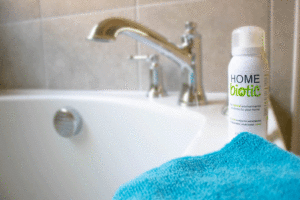

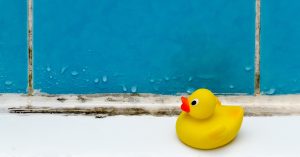
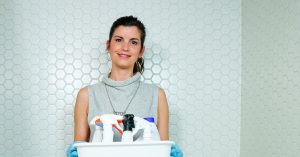 DOWNSIDES OF USING BLEACH
DOWNSIDES OF USING BLEACH IS HYDROGEN PEROXIDE BETTER?
IS HYDROGEN PEROXIDE BETTER?